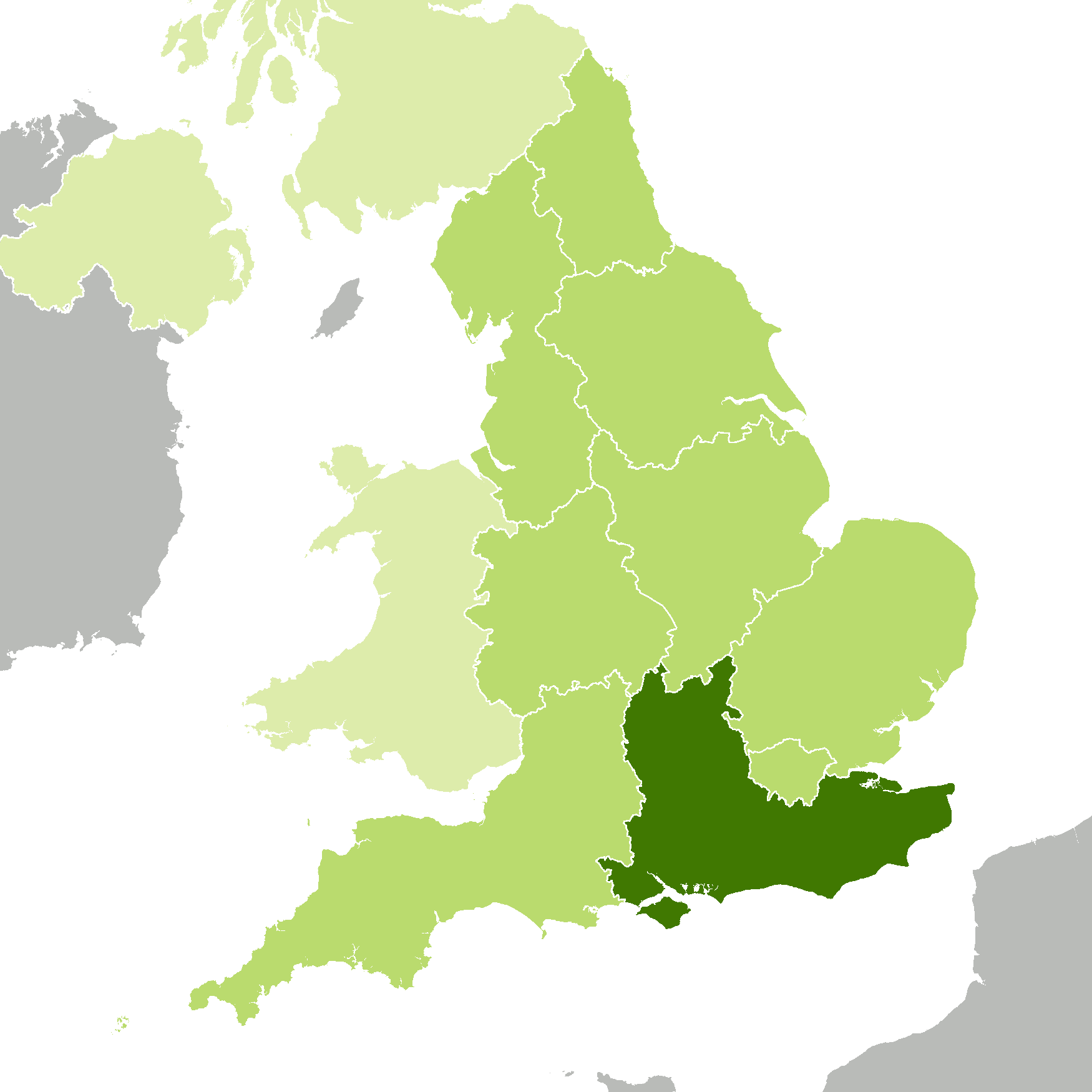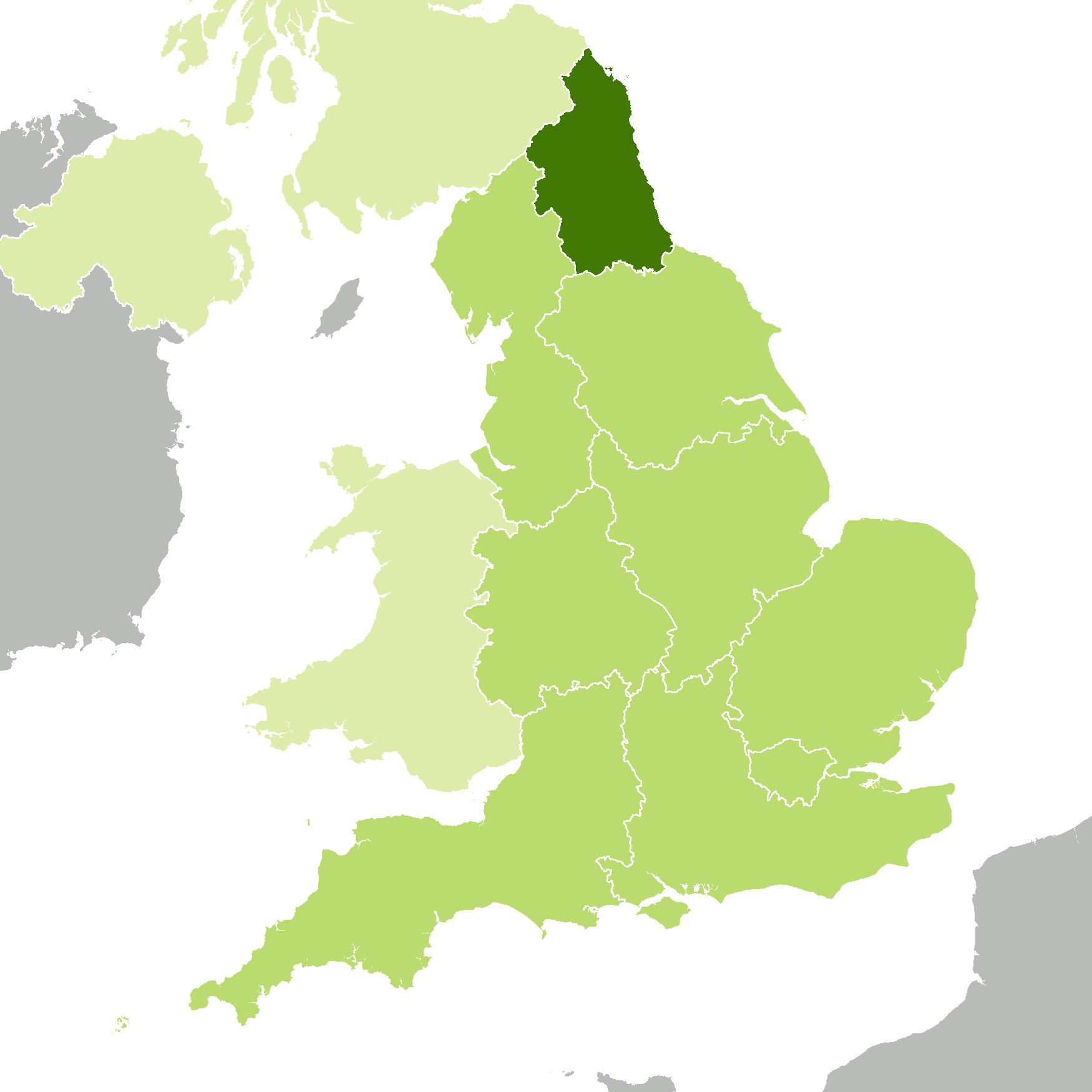The Geography of
England
Why visit England?
England is a beautiful country with so much to offer. The the natural scenery, the variety of attractions, and the friendly people make it a truly memorable experience. It has so many different landscapes and scenery that it would be difficult to list them all. There are rolling hills, picturesque villages, sandy beaches and rocky coasts. What makes England so special is the mix of old and new. You can see Tudor style buildings next to modern skyscrapers. The contrast between the old and the new is really amazing, and it gives the country a really unique feeling.
Contents
Map
 Relief map of the West Midlands
Relief map of the West Midlands
What is the landscape of England like?
In general England exhibits a beautiful variety. In some parts there are green fields; in others, a pleasant change of hills and vales, rivers lined with woodlands, and all interspersed with meadows. Some tracts abound with more dramatic views; lofty mountains, craggy rocks, deep narrow dells, and rushing torrents. There is a wide variety of landscape and terrain that can be covered in a short time.
In other parts of England there are gorse covered moors and wild uncultivated heaths. The midland and southern parts of England, rich and fertile, are where the traditional English countryside is to be found. Much of southern England consists of lush farmland, which is watered by a number of rivers, including the Thames. Part of the eastern coast are distinguished by flat marshes, fens, and sands.
On the western side, the country is rather higher; a ridge of high hills and low mountains extends, with a few intervals, from the Scottish border to the southwest; the principal hills are in the Lake District in Cumbria; in the Yorkshire Dales; in the Peak District in Derbyshire; in the Cotswold Hills in the West country; and in the moorland plateaus of Exmoor and Dartmoor in the Southwest.
Although England has no great river systems, its coast is pockmarked with dozens of bays and inlets that make excellent natural harbors. The convoluted path of the coastline means that no part of the country is more than 75 miles (121 kilometers) from the sea.
What is the nature of England like?
The mild climate coupled with lots of rain enrich English gardens and countryside with beautiful colors and lush greenery. The peculiarly rich appearance of rural England is due to the closely-divided fields with their high hedges, and especially to the vigorous growth of trees. Great areas of England were once under forest, but the clearing of land since the Middle Ages led to the gradual disforesting of large areas, only partially restored in modern times. There are still, however, well-defined woodland areas. The New Forest in Hampshire, the Forest of Dean in Gloucestershire, and Epping Forest on the edge of London, are notable examples. The high upland areas, by contrast, are for the most part heathery moorland or sometimes hill pastures.
What is the climate of England like?
See also our article: The Climate of the United Kingdom
England enjoys a temperate, maritime climate. Summer temperatures are around 20°C (70°F); in winter the average low is about 5°C (40°F). The rainy months are from October to January, although spells of wet weather can occur in any month. Spring and fall are often delightful seasons. On the whole the climate is variable, and the weather always changeable. If England has a lesser share of the sun than some other countries; it is also better protected from severe cold and from overpowering heat. In the southern counties the climate is very mild, and the countryside is as green and rich as that of any country in Europe.
| Climate data for London (1991–2020) | |||||||||||||
|---|---|---|---|---|---|---|---|---|---|---|---|---|---|
| Month | Jan | Feb | Mar | Apr | May | Jun | Jul | Aug | Sep | Oct | Nov | Dec | Year |
| Average high °C (°F) | 8.4 (47.1) | 9.0 (48.2) | 11.7 (53.1) | 15.0 (59.0) | 18.4 (65.1) | 21.6 (70.9) | 23.9 (75.0) | 23.4 (74.1) | 20.2 (68.4) | 15.8 (60.4) | 11.5 (52.7) | 8.8 (47.8) | 15.7 (60.3) |
| Daily mean °C (°F) | 5.6 (42.1) | 5.8 (42.4) | 7.9 (46.2) | 10.5 (50.9) | 13.7 (56.7) | 16.8 (62.2) | 19.0 (66.2) | 18.7 (65.7) | 15.9 (60.6) | 12.3 (54.1) | 8.4 (47.1) | 5.9 (42.6) | 11.7 (53.1) |
| Average low °C (°F) | 2.7 (36.9) | 2.7 (36.9) | 4.1 (39.4) | 6.0 (42.8) | 9.1 (48.4) | 12.0 (53.6) | 14.2 (57.6) | 14.1 (57.4) | 11.6 (52.9) | 8.8 (47.8) | 5.3 (41.5) | 3.1 (37.6) | 7.8 (46.0) |
| Average precipitation mm (inches) | 58.8 (2.31) | 45.0 (1.77) | 38.8 (1.53) | 42.3 (1.67) | 45.9 (1.81) | 47.3 (1.86) | 45.8 (1.80) | 52.8 (2.08) | 49.6 (1.95) | 65.1 (2.56) | 66.6 (2.62) | 57.1 (2.25) | 615.0 (24.21) |
| Source: Met Office | |||||||||||||
The official websites
England

Discover England
| Location: | Southern and eastern portion of the island of Britain |
| Coordinates: | 53° 00′ N, 2° 00′ W |
| Size: | • 650 km N-S; 500 km E-W • 400 miles N-S; 310 miles E-W |
| Terrain: | A mostly hilly landscape with some plains especially in the east |
| Climate: | Maritime climate with warm summers; cool winters; year-round rainfall |
| Highest point: | Scafell Pike 978 m / 3,209 ft |
| Forest: | 16% (2010 est.) (source) |
| Population: | 56,286,961 (2019 est) |
| Population density: | High (432/km²) |
| Capital: | London |
| Languages: | English |
| Human Development Index: | Very High (0.935) |











